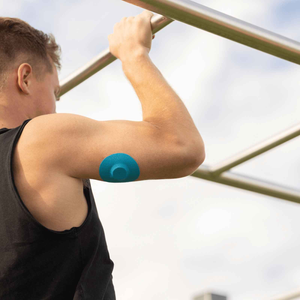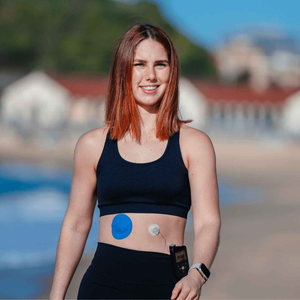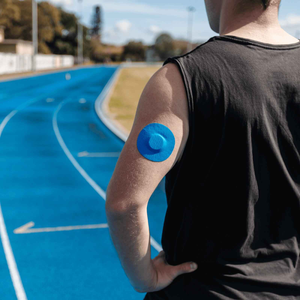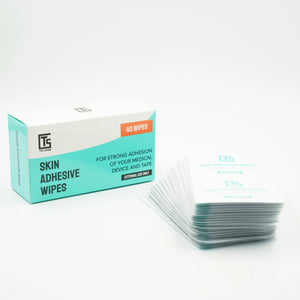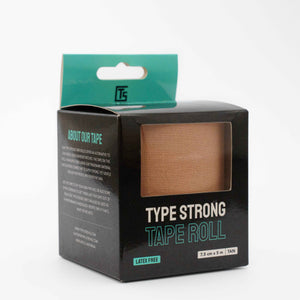If your child keeps scratching, tugging, or pulling at their CGM patch, you’re not the only one noticing. Whether it’s a Dexcom, Libre, or Omnipod, many parents report that patches can sometimes cause itchiness, irritation, or sensory discomfort for kids – even when everything seems to be applied correctly.
But don’t worry – this is a solvable problem. With a few thoughtful tweaks and the right tools, you can help your child feel more comfortable, reduce patch-picking, and make CGM wear a little less frustrating for both of you.
Why CGM patches bother some children
Kids’ skin is more reactive than adults’, and their tolerance for small irritations is usually lower. That means even a well-placed patch can become a source of distraction or discomfort. Here’s what could be going on:
-
Adhesive irritation - Some children’s skin simply doesn’t get along with certain adhesives. According to the NHS, children are more prone to developing skin reactions from materials like latex, rubber, or adhesives – especially if they have eczema or known sensitivities. Even with hypoallergenic materials, minor CGM patch reactions like itching or redness can still occur.
-
Heat and sweat buildup - Sweat and heat can worsen discomfort. When a patch traps moisture – whether after a sports class or just from running around – it can start to feel sticky, itchy, or hot. Sweat under the patch is a surprisingly common cause of irritation.
-
Sensory sensitivity - Some kids, particularly those with sensory processing differences, are more aware of the physical presence of their CGM. What feels like “nothing” to one child might feel distracting or even overwhelming to another.
-
Habit or boredom - Sometimes patch scratching is just... something to do. Like nail biting or hair twirling, patch picking can become a habit when kids are bored, anxious, or just fidgety.

How to stop the scratching: parent-tested tips
Here’s a list of practical strategies to reduce patch discomfort and scratching in children – all based on real-world feedback from CGM users.
1. Choose gentle patches designed for sensitive skin
The adhesive matters more than you think. If irritation is the issue, switching to a softer, hypoallergenic patch can make a huge difference. Type Strong’s Dexcom G7 patches, Freestyle Libre patches, and Omnipod patches are all made with flexible, skin-friendly materials designed for all-day wear.
Not sure what to try? Start with a hypoallergenic CGM patch that’s gentle on delicate skin but still holds strong.
2. Follow a proper skin prep routine
One of the most effective ways to reduce itch is to prep the skin properly. That means washing the site, drying thoroughly, and skipping moisturisers right before application. Type Strong’s guide on proper skin prep breaks it down into simple steps for longer-lasting, more comfortable wear.
3. Add adhesive wipes for extra comfort
If the patch shifts around when your child sweats or moves, that rubbing can lead to scratching. A layer of skin adhesive wipes can improve stick, reduce friction, and even act as a barrier between the adhesive and skin.
4. Rotate patch placement
Using the same spot every time can irritate the skin over time. If your child has hairier areas or sensitive patches of skin, rotating can help reduce friction and soreness. Learn more about placement tips for hairy or sensitive skin.
5. Try gentle distractions
If it’s more habit than discomfort, give your child a fidget bracelet, soft sensory toy, or patch-themed sticker to decorate. This helps shift the focus away from the patch itself. Some families even let their child personalise their patch, turning it into a fun accessory. Here’s how sensor patches as fashion can work for younger users too.
6. Always keep backups on hand
If the patch gets scratched off or starts peeling midday, you’ll want a spare on hand – whether it’s at school, in your bag, or with the school nurse. Having spare CGM patches ready can save a sensor and avoid any disruption to readings.
When to consider switching styles
If the scratching continues despite your best efforts, it might be time to try a different patch fit or layering technique. For kids who are extra active or tend to peel off patches at night, Dexcom overpatches can help prevent edge rolling.
Still experimenting? Type Strong’s patch bundle lets you test different shapes, sizes, and materials to see what suits your child’s routine best.

You're doing just fine
Scratching at CGM patches is common – and fixable. Whether it’s a simple prep change or a completely new patch style, these little adjustments can go a long way in helping your child stay comfortable, confident, and safe.
If you’re unsure where to start, Type Strong is here to support you with real-world advice, parent-friendly solutions, and products built for everyday life with diabetes.
